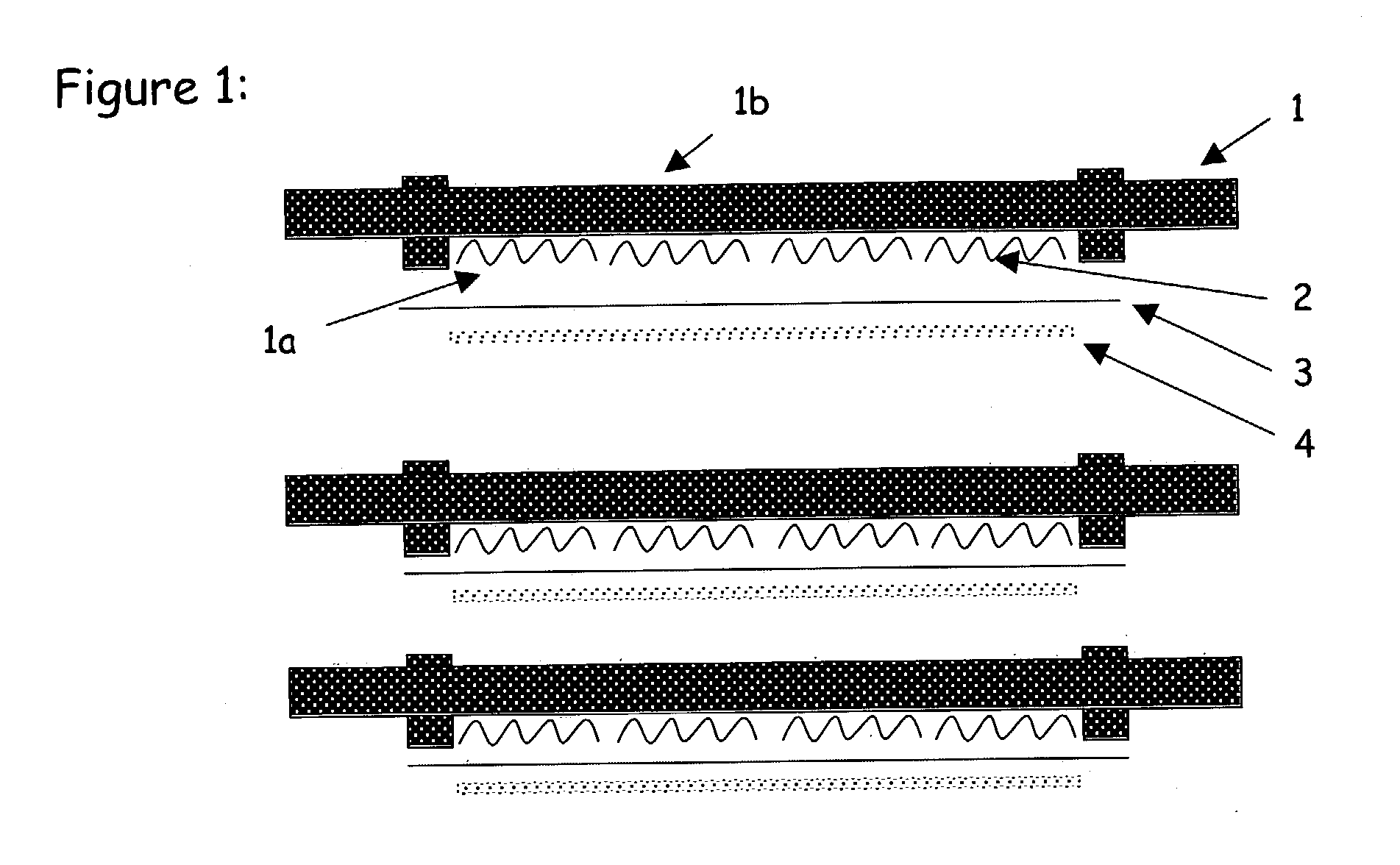Steam-reforming catalytic structure and pure hydrogen generator comprising the same and method of operation of same
a technology of pure hydrogen and catalytic structure, which is applied in the direction of metal/metal-oxide/metal-hydroxide catalyst, combustible gas production, chemical production, etc., can solve the problems of historically limited, costly ceramic catalytic monoliths introduced in automotive catalytic, etc., and achieve less expensive structures and improved hydrogen generation
- Summary
- Abstract
- Description
- Claims
- Application Information
AI Technical Summary
Benefits of technology
Problems solved by technology
Method used
Image
Examples
example 2
Water Gas Shift Reaction
[0047] The same membrane reactor geometry as in Example 1. The catalyst was WC301B, a proprietary noble metal based water gas shift catalyst supplied by Sud-Chemie, Inc. of Louisville, Ky. The reactor was operated isothermally at 450.degree. C. and at a pressure of 100 psig. The membrane was a 10 micron thick Pd / Cu 60 / 40 wt %. Values are reported to 2 significant figures. Permeate pressure is ambient.
1 Inlet Outlet Permeate Species flow sccm flow sccm flow sccm H.sub.2O 410 260 0 H.sub.2 320 80 390 CO 160 11 0 CO.sub.2 82 230 0 CH.sub.4 11 14 0 [CO.sub.2][H.sub.2] / [CO][H.sub.2O] 0.20 6.4 37.8 (incl. Outlet)
[0048] The equilibrium constant for the WGS reaction at 450.degree. C. is around 11.9. The value of 37.8 represents a temperature of approximately 325.degree. C. Thus the membrane reactor benefit is about 125.degree. C.
example 3
Water gas Shift Reaction
[0049] Same configuration, catalyst, and membrane of Example 2, 350.degree. C. isothermal operation, 100 psig pressure, permeate produced at ambient pressure.
2 Inlet Outlet Permeate Species flow sccm flow scem flow sccm H.sub.2O 540 400 0 H.sub.2 260 90 310 CO 140 4.0 0 CO.sub.2 68 200 0 CH.sub.4 9.2 9.3 0 [CO.sub.2][H.sub.2] / [CO][H.sub.2O] 0.23 11.3 50 (incl. Outlet)
example 4
[0050] Same reactor configuration as in Example 3; membrane is 18 microns thick, the catalyst is designated FCR-HC 14, WC-723B also supplied by Sud-Chemie, Inc. of Louisville, Ky. Reaction conditions were 200 psig, 550.degree. C. isothermal operation permeate pressure is ambient.
3 Species Inlet flow sccm Outlet flow sccm Permeate flow sccm H.sub.2O 270 120 0 H.sub.2 0 9.0 310 CO 0 9.0 0 CO.sub.2 0 70 0 CH.sub.4 120 40 0
[0051] Note that the expected CH.sub.4 conversion at equilibrium under these conditions of temperature and pressure is only 17% compared to 67% in this case. To achieve the same 67% conversion of methane in an ordinary reactor at these conditions would require a temperature of about 860.degree. C. Thus a temperature lowering benefit of nearly 300.degree. C. is realized in the membrane reactor.
PUM
| Property | Measurement | Unit |
|---|---|---|
| temperature | aaaaa | aaaaa |
| temperature | aaaaa | aaaaa |
| temperature | aaaaa | aaaaa |
Abstract
Description
Claims
Application Information
 Login to View More
Login to View More - R&D
- Intellectual Property
- Life Sciences
- Materials
- Tech Scout
- Unparalleled Data Quality
- Higher Quality Content
- 60% Fewer Hallucinations
Browse by: Latest US Patents, China's latest patents, Technical Efficacy Thesaurus, Application Domain, Technology Topic, Popular Technical Reports.
© 2025 PatSnap. All rights reserved.Legal|Privacy policy|Modern Slavery Act Transparency Statement|Sitemap|About US| Contact US: help@patsnap.com

